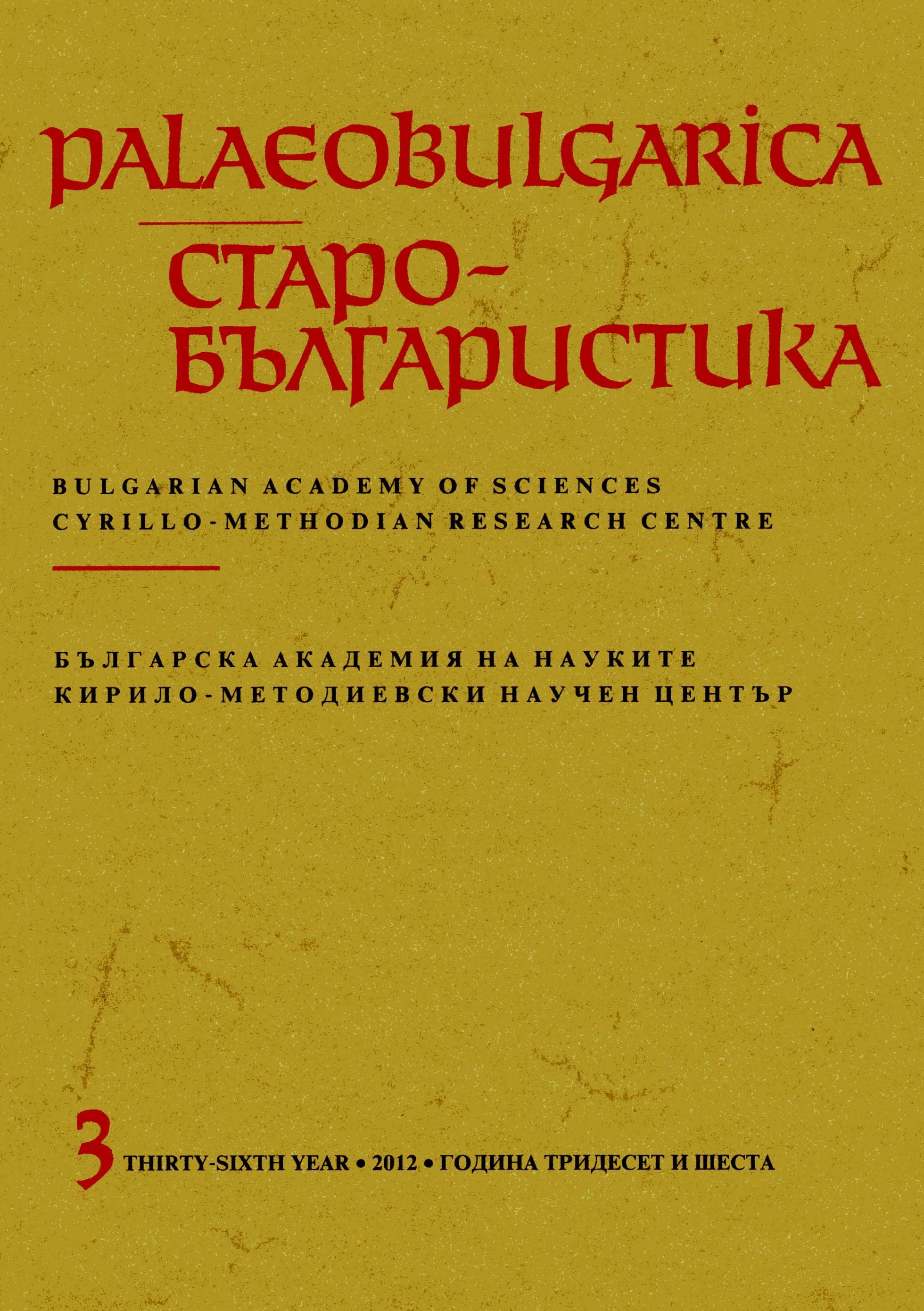За календарните триодни сборници, писани в Хилендарския манастир
On the Triodion Panegyrics Written at the Hilandar Monastery
Author(s): Klimentina IvanovaSubject(s): Language and Literature Studies
Published by: Кирило-Методиевски научен център при Българска академия на науките
Summary/Abstract: The library of the Hilandar Monastery keeps 16 codices containing (exclusively or mainly) panegyric works to be used in the two triodion cycles - the Lenten and the Flowery. There are eight codices comprising whole cycles and not just single homilies. The earliest manuscript dates from the beginning of the 14th century and the latest - from the 17th. In this way the Hilandar triodion panegyrics present both the ancient (10th c.) and the later, Athonite (Athos-Turnovo, 14th c.) translation of this type of miscellanies. The five triodion panegyrics which were undoubtedly written at Hilandar and in the Karian skete of Sava the Serbian not only contain emblematic texts going back to both translations but thanks to the organic character of the Hilandar collection they shed light on certain problems concerning the reception of the triodion panegyrics among the monks. The codices № 384 and № 390 follow the Studios typikon, while № 392, № 388 and № 389 follow the Jerusalem typikon (the last two are bound together which means that there are only four books). A more detailed analysis was made of the contents of one of the earliest codices, № 384, which also comprises the Paraenesis. It dates from the early 14th с and was written in the Karian skete of St. Sava. Its second part (Hil. 384/11) reflects ancient protographs translated in the 9th and the 10th cc, some of which can be traced back to the Glagolitic tradition which we know from the Glagolita Clozianus. As regards the texts it comprises, Hil. 384/11 has no analogue. The comparison of the individual sermons reveals parallels with different triodion panegyrics following the Studios typikon. It also contains rare and little-known texts, some of them preserved only here. It is possible that it was used for Hil. 390, another Studios typikon panegyric. The panegyrics following the Jerusalem typikon appear in the early third quarter of the 14th с At that time two voluminous codices comprising the full contents of the triodion panegyricaccording to the Jerusalem typikon were created at Hilandar. They were written by the same copyist, viz. the monk Job.
Journal: PALAEOBULGARICA / СТАРОБЪЛГАРИСТИКА
- Issue Year: 2012
- Issue No: 3
- Page Range: 11-28
- Page Count: 18
- Language: Bulgarian
- Content File-PDF

